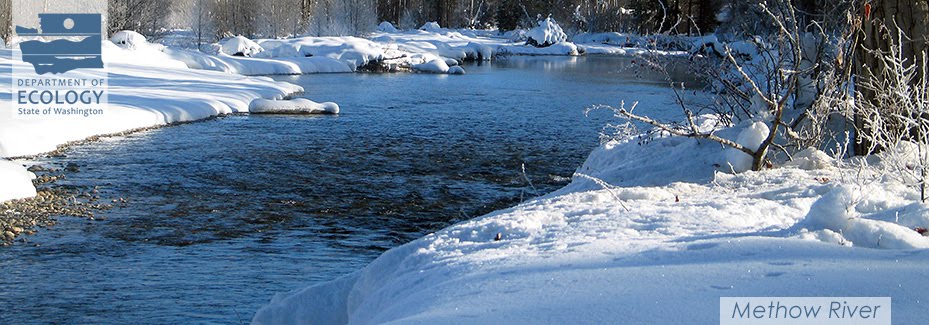Record numbers of sockeye salmon are swimming up the Columbia River and the Department of Ecology is working with its partners at Zosel Dam near the Canadian border to help as many of them as possible reach their destination.
 |
|
A sockeye salmon leaps up the fish gate at Zosel
Dam, one of hundreds moving through the dam last week.
Photo Richard McGuire, Osoyoos Times
|
It's a tough run upstream
More than 500,000 fish have passed the Bonneville Dam east of Portland in Oregon but ultimately scores of them won’t make it to their final destination in Canada because of predators, fishermen and dams.The Zosel Dam at Oroville, owned and operated by Washington state through the Department of Ecology is one of the final hurdles for the fish. The dam, constructed in 1987, has as its primary purpose the maintenance of water levels in Lake Osoyoos. Ecology contracts with the Oroville Tonasket Irrigation District to operate the dam. The lake provides water for irrigation and recreation, as well as the growing fishery in the upper Okanogan Basin.
Flexible rules help the run
Operation of the dam, which does not produce electricity, is governed by orders developed under the Boundary Waters Treaty of 1909 between the U.S. and Canada. For over 100 years this treaty has governed the management of water bodies that cross the border of our two countries. While these orders are confined largely to water quantity issues, they leave Ecology with enough flexibility to meet many demands not covered under the orders.One of these demands for Ecology and our local, tribal, state and provincial partners is helping these fish get upriver past Zosel Dam as quickly as possible.
“Ecology is able to adjust the configuration of the gates that control the flow of water through the dam to assist fish as they pass through the structure,” said Al Josephy, environmental planner at Ecology. “This passage occurs when water temperatures in the river fall below 24 degrees Celsius (74 degrees Fahrenheit) which happens irregularly through the summer months. When it does happen, the fish rush to clear the dam and move into the lakes and the Okanagan River in Canada.”
Record numbers now
As of Friday, July 25th, fish were moving through the gates at Zosel at a rate of 800 to 1000 fish per hour.Despite the efforts of Ecology and our partners, a large number of dead fish will likely be seen along river banks and lake shores this year because the size of the sockeye run is so large.
“We get calls every year from folks who assume the fish are dying because of how we regulate water levels at Zosel Dam,” Josephy said. “ The truth is, natural conditions like high temperatures take their toll on the fish runs. We are doing all we can to help sustain this tremendously valuable natural resource.”

No comments:
Post a Comment